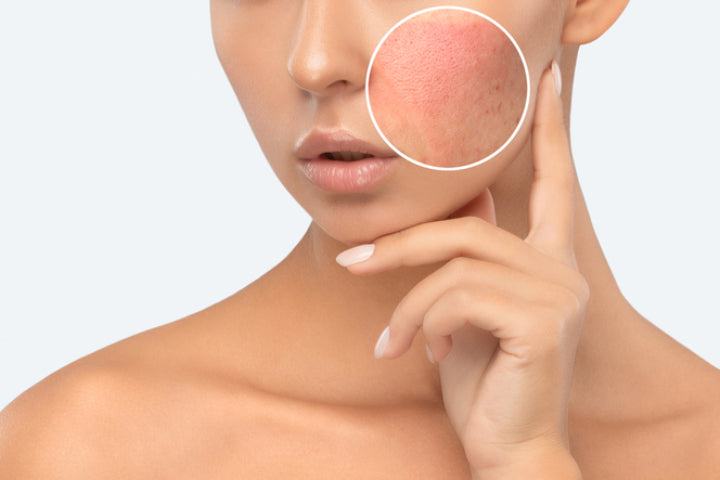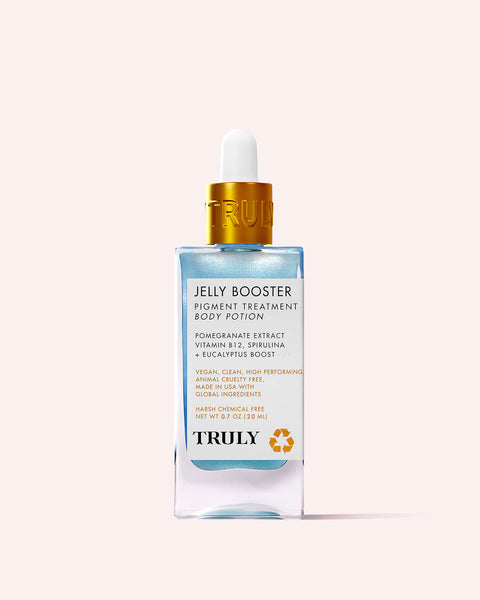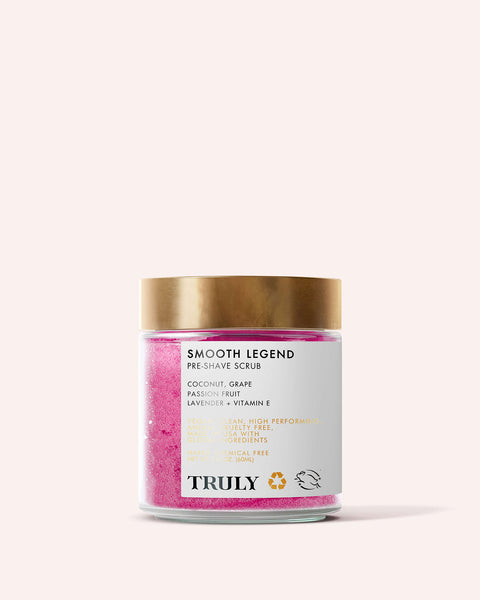What Those Bumps on Your Skin Mean

You're probably already familiar with bumps like blackheads and whiteheads, but what about those tiny bumps under the skin or those yellowish bumps that look like whiteheads -- but aren't?
Bumps on the skin come in all different shapes, colors, and textures. The good news is that most of those bumps are totally harmless. As a general rule of thumb, if the bump on your face isn't bleeding, turning darker, or changing drastically in appearance, it probably doesn't require any medical intervention. Most bumps, like acne, can often be managed at home with a good skincare routine.
Below, we help you identify which type of bump you have and whether or not they’re worth bringing up to your dermatologist or healthcare provider.
#1: Inflammatory Acne
What it is: Inflammatory acne looks like pink or red pimples. According to the American Academy of Dermatology (AAD), they occur due to hormonal and genetical factors. They're nothing to worry about, but if you want to see the back of them we recommend visiting your dermatologist for over-the-counter options like salicylic acid.

How to treat: A great option is Truly's CBD Jelly Bundle -- a skincare kit designed to clear blemishes. Inside, you'll find a facial cleanser, exfoliating toner, facial serum, and body cleanser formulated with salicylic acid and alpha hydroxy acids like glycolic to dissolve dead skin cells, clear pores, and banish breakouts. Avoid thick, comedogenic lotions to prevent further breakouts.
#2: Comedones
What it is: Comedones are categorized into two groups: closed comedones (known as whiteheads) and open comedones (known as blackheads).
Both types of comedones have been clogged with excess oil and dead skin cells. The only difference is that those that become blackheads have become oxidized, leaving them with a brown or black hue. Whiteheads, on the other hand, are closed and appear white, yellow, or flesh-colored.

How to treat: Try salicylic acid and benzoyl peroxide products to kill acne-causing bacteria and decongest the pores. Or stick one of Truly's Super Heart Pimple Patches over it -- zit-draining stickers flecked with benzoyl peroxide and citric acid to zap away zits. We also recommend steering clear of non-comedogenic creams and moisturizers which may clog the pores and trigger more breakouts.
#3: Keratosis Pilaris
What it is: These small bumps typically occur on the thighs and upper arms, and look a lot like goosebumps. However, in some cases they can also appear on the face. They can also sometimes be hereditary, and are usually more prevalent in children.
"Keratosis pilaris bumps can be confused with ‘goosebumps’ or even pimples but are actually caused by small plugs of dead skin cells that block the hair follicle," says dermatologist Joel Schlessinger, M.D.

How to treat: Regular exfoliation with AHAs like glycolic and lactic acid can prevent the buildup of dead skin cells that block the hair follicle. Try Truly's Blueberry Kush CBD Body Scrub to clear, smooth, and exfoliate away these tiny skin bumps. Just avoid over-doing it -- especially if you have sensitive skin -- as it may lead to irritation and result in further bumps.
#4: Milia
What it is: Milia are tiny keratin-filled cysts under the skin that are commonly found around the eyes, cheeks, and forehead. They can affect any skin type or skin color. Dermatologists say milia can appear without a specific reason, although it is more prevalent in people with skin conditions like rosacea or eczema. It can also affect people who regularly use pore-clogging makeup or skincare products.

How to treat: Mila often resolves on their own, but if you're looking for a faster treatment option, visit your dermatologist or facialist to get them cleaned out and ultimately, removed. Since milia are basically dead skin cells stuck under your skin, your skin can also benefit from frequent exfoliation sessions with AHAs, like Truly's Purple Rain Facial Serum.
#5: Sebaceous Hyperplasia
What it is: Sebaceous hyperplasia appears as whitish to yellowish bumps and often results from enlarged oil glands. It is said to be harmless and most commonly due to genetics. Many people mistake sebaceous hyperplasia for whiteheads, but they aren't the same thing.
How to treat: Unfortunately, you cannot get rid of get rid of sebaceous hyperplasia from home. You will need to undergo an in-office treatment, several times, to fully remove the gland. Your best options for treating sebaceous hyperplasia include laser therapy, cryotherapy, and electrocauterization.
#6: Allergic Reaction
What it is: Bumps on the face may be a result of an allergic reaction to either skincare products or foods. You may also experience marks on your body known as hives, which are characterized by reddened, itchy bumps that appear suddenly upon exposure to an allergen.
Another type of common allergic reaction that appears on the skin is known as irritant contact dermatitis. It appears as red bumps on the skin and occurs as a result of direct skin contact with things like jewelry or ingredients in skincare products.
How to treat: This might sound obvious, but you should definitely stop using whatever is causing your reaction if you manage to pinpoint the source. You can also take an oral antihistamine and use an over-the-counter topical treatment to soothe any redness, skin rashes, or blisters that may be present on your skin.
#7: Skin Tags
What it is: Oval-shaped, benign skin growths that appear on the face, neck, armpits, and groin area. You may easily mistake them for warts. While there's not a known cause of skin tags, experts believe they may form when skin rubs together.
How to treat: Skin tags are totally harmless as long as they don’t change color, grow rapidly, or become infected. Speak to your dermatologist if you see any changes.
If you have a common skin condition such as atopic dermatitis, psoriasis, or severely dry skin that's scaly, consult your dermatologist. It's also worth getting checked out if you see any changes in bumps, which may indicate skin cancer and require a biopsy. And if you suspect you have a fungal infection, once again, visit your derm! Whenever you have any concerns regarding your skin, it's always a good idea to seek medical advice.
























































